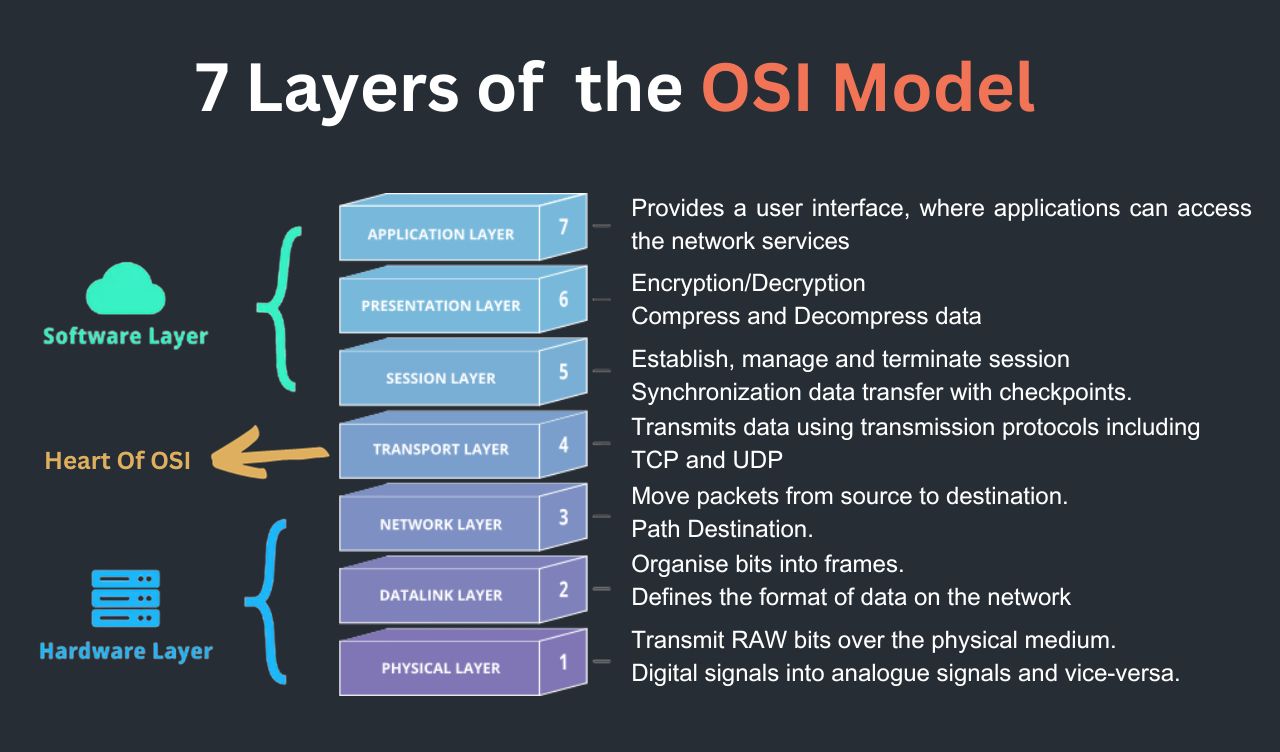Computer Networking
 Sahil Soni
Sahil Soni
Fundamentals of Computer Networking
Networking is the backbone of modern technology, enabling communication, data transfer, and cloud computing. Whether you are an aspiring IT professional, a cloud computing enthusiast, or a DevOps engineer, a strong understanding of networking fundamentals is essential. This guide covers key concepts that form the foundation of computer networking, providing both theoretical insights and practical applications.
Table of Contents
Introduction to Computer Networking
Types of Networks (LAN, WAN, MAN)
Network Topologies and Their Applications
IP Addressing and Subnetting
Domain Name System (DNS) and Internet Functionality
Load Balancers and High Availability
Network Diagnostic Tools (Ping, Traceroute, Nslookup)
Network Devices and Their Functions
Firewalls and Network Security
Routing and Switching Fundamentals
OSI Model: Understanding Network Communication
Conclusion
1. Introduction to Computer Networking
Computer networking involves the interconnection of devices to facilitate communication and resource sharing. Networks allow data to be exchanged efficiently, whether through local connections or global communication channels such as the internet.
Key Networking Concepts:
Packets: Small units of data transmitted across networks.
Protocols: Rules that govern communication between devices (e.g., TCP/IP, HTTP).
Latency and Bandwidth: Measures of network speed and efficiency.
A well-designed network ensures security, scalability, and seamless data transmission, making it a critical component in fields such as cloud computing, cybersecurity, and enterprise IT infrastructure.
2. Types of Networks (LAN, WAN, MAN)
Networks are classified based on their scale and function:
Local Area Network (LAN): Covers small areas like homes and offices.
Wide Area Network (WAN): Spans large geographical regions, including the internet.
Metropolitan Area Network (MAN): Connects networks within a city or metropolitan area.
Understanding these network types is essential for designing and managing IT infrastructure effectively.
3. Network Topologies and Their Applications
Network topology refers to the arrangement of devices within a network. The most common topologies include:
Star Topology: Devices connect to a central switch, providing simplicity and reliability.
Mesh Topology: Every device is interconnected, ensuring redundancy and fault tolerance.
Bus and Ring Topologies: Older designs primarily used in legacy systems.
Selecting an appropriate topology depends on factors such as network size, cost, and performance requirements.
4. IP Addressing and Subnetting
An IP address uniquely identifies devices on a network. There are two primary types:
IPv4: The most commonly used format (e.g., 192.168.1.1).
IPv6: A newer standard designed to accommodate a larger number of devices (e.g., 2001:db8::ff00:42:8329).
Subnetting
Subnetting divides a larger network into smaller, more manageable segments. This improves security, reduces congestion, and optimizes resource allocation.
Example:
A company can allocate 192.168.1.0/24 for internal office use while reserving 192.168.2.0/24 for external applications.
5. Domain Name System (DNS) and Internet Functionality
DNS is responsible for translating domain names (e.g., example.com) into IP addresses, allowing users to access websites without memorizing numerical addresses.
How DNS Works:
A user enters a website URL in a browser.
The browser queries a DNS server for the corresponding IP address.
The server returns the IP, and the connection is established.
DNS failures can disrupt access to websites and services, making its reliability crucial for internet functionality.
6. Load Balancers and High Availability
Load balancers distribute network traffic across multiple servers to prevent failures and optimize performance.
Types of Load Balancers:
Layer 4 (Transport Layer): Routes traffic based on IP and port numbers.
Layer 7 (Application Layer): Routes traffic based on content, such as URLs.
Load balancing is essential for cloud computing, where services need to scale efficiently to handle large user requests.
7. Network Diagnostic Tools (Ping, Traceroute, Nslookup)
Network troubleshooting requires specialized tools to identify connectivity issues.
Ping: Checks if a device is reachable and measures response time.
Traceroute: Identifies the path data takes across a network.
Nslookup: Retrieves domain-related DNS information.
These tools assist in diagnosing network failures, latency issues, and misconfigurations.
8. Network Devices and Their Functions
Different network devices play specific roles in maintaining communication.
Router: Directs traffic between different networks.
Switch: Connects devices within a LAN and manages data flow.
Modem: Converts digital signals for internet access.
Firewall: Protects networks from unauthorized access and cyber threats.
Each device is critical in ensuring the smooth operation of both local and wide-scale networks.
9. Firewalls and Network Security
Firewalls act as security barriers, controlling inbound and outbound traffic based on predefined rules.
Types of Firewalls:
Packet Filtering Firewall: Filters traffic based on predefined rules.
Stateful Inspection Firewall: Monitors active connections and filters accordingly.
Proxy Firewall: Acts as an intermediary between users and the internet.
Implementing robust firewall policies enhances network security by preventing unauthorized access and cyberattacks.
10. Routing and Switching Fundamentals
Routing and switching are fundamental to network communication.
Routing: Determines the best path for data to travel across networks.
Switching: Directs data within a local network, ensuring efficient transmission.
Common Routing Protocols:
RIP (Routing Information Protocol): A basic distance-vector protocol.
OSPF (Open Shortest Path First): A faster and more scalable option.
BGP (Border Gateway Protocol): Essential for global internet routing.
Understanding routing and switching concepts is crucial for managing enterprise and cloud-based networks.
11. OSI Model: Understanding Network Communication
The OSI (Open Systems Interconnection) Model is a conceptual framework that standardizes network communication into seven layers. Each layer has a specific function, ensuring seamless data transfer across networks.
Layers of the OSI Model:
Physical Layer – Handles raw data transmission over cables, fiber optics, or wireless signals.
Data Link Layer – Manages MAC addressing and error detection to ensure reliable data transfer.
Network Layer – Routes data between devices using IP addresses (e.g., IPv4, IPv6).
Transport Layer – Ensures end-to-end communication through protocols like TCP and UDP.
Session Layer – Establishes, maintains, and terminates communication sessions between devices.
Presentation Layer – Handles data encryption, compression, and format translation (e.g., JPEG, SSL).
Application Layer – Provides network services to end-users, including HTTP, FTP, and DNS.
The OSI model helps troubleshoot network issues by identifying which layer a problem occurs in, making it a fundamental concept in networking.

12. Conclusion
Computer networking is the foundation for modern digital communication, enabling data exchange, internet access, and cloud computing. This guide covered essential concepts, including network types, topologies, IP addressing, subnetting, DNS, load balancing, and key network devices. It also introduced security measures such as firewalls and fundamental routing and switching principles.
A strong grasp of these fundamentals is crucial for IT professionals, cloud engineers, and DevOps practitioners. By applying networking concepts in real-world scenarios, troubleshooting issues using diagnostic tools, and exploring advanced topics, individuals can build expertise in networking. Pursuing hands-on experience and certifications will further enhance skills, making networking a valuable asset in the evolving tech industry.
Subscribe to my newsletter
Read articles from Sahil Soni directly inside your inbox. Subscribe to the newsletter, and don't miss out.
Written by
